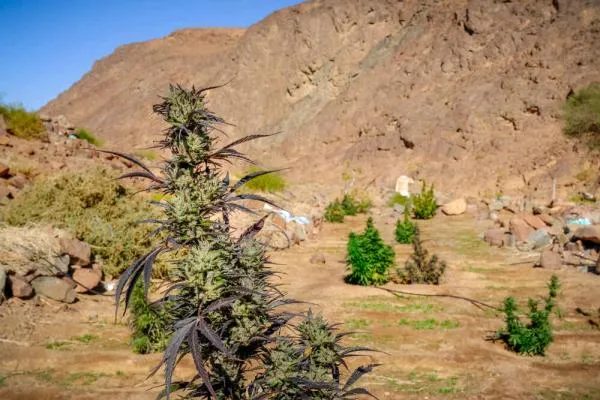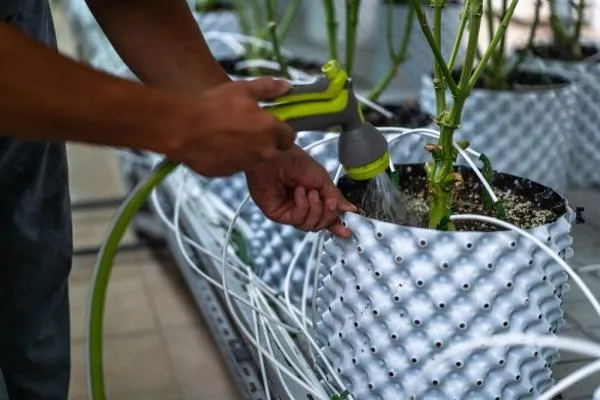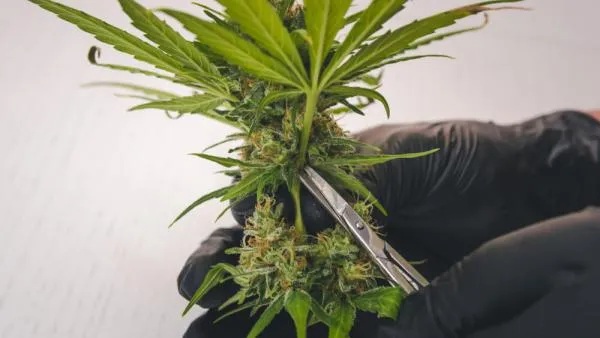Growing your own cannabis can be an incredibly rewarding experience. But let’s be real – it comes with its fair share of challenges, one of the most notorious being bud rot. If you are new to cultivating marijuana, bud rot can seem like a stealthy villain sneaking into your garden. But fear not! In this article, I will walk you through how to identify, prevent, and treat this pesky disease so you can keep your plants happy and healthy.
What is bud rot and why is it dangerous?

Understanding botrytis cinerea – the cause of bud rot
Bud rot is caused by a fungus known as Botrytis cinerea. It thrives in humid, moist conditions and loves dense cannabis buds where moisture can get trapped. Once the fungus finds its way inside your plants, it can quickly rot out your precious buds from the inside. And that’s where things get tricky – you often will not see the signs of the infection until it’s already a problem.
Why bud rot is harmful to your cannabis plants
This sneaky mold does not just damage your buds; it can ruin an entire crop if left unchecked. Bud rot spreads fast, turning once-healthy colas into a gray, mushy mess. Worse yet, it does not stop at just one plant – the spores can travel through the air, making it a nightmare for both indoor and outdoor growers. Plus, it can open up your plants to other infections like powdery mildew and root rot.
Consequences of consuming moldy cannabis
Weed can expire and go off and consuming moldy marijuana is a big no-no. It is not just unpleasant; it can be downright dangerous. Smoking or ingesting moldy weed can lead to respiratory issues, infections, and even digestive problems. Simply put, it is not worth the risk.
How to identify bud rot on cannabis plants

Common symptoms on buds, colas, and leaves
The most common signs of bud rot can be found on your buds, colas, and leaves. Look out for discolored buds, usually turning gray, brown, or even purple. The buds may start to look crumbly and dry, while leaves become brittle and yellow, often falling off easily.
Early signs of bud rot – white, fluffy growth
Early-stage bud rot starts as a fluffy white growth, often deep within the buds. This phase is hard to spot because it hides away from plain view. If you catch it early, you might see a faint white fuzz on the sides of the buds. This is your warning sign to take immediate action.
Advanced stages – discoloration, brown, or gray mold
As bud rot progresses, it turns into a dark gray or brown color. The buds may start to dry out, split apart easily, and reveal an unmistakable moldy mess inside. If you notice parts of your colas looking darker than the rest or drying out in patches, you are likely dealing with an advanced infection.
How to inspect buds for hidden rot
To check for bud rot, gently pull apart the buds and inspect the insides. Bud rot often starts from within, so you may have to dig a bit to find the initial signs. If you find any discolored, mushy spots, it is time to act fast. Trust me, regular inspections can save your crop!
Differences between bud rot and other plant issues
Bud rot can sometimes be confused with other plant problems like nutrient deficiencies or general plant stress. The key difference is that bud rot directly affects the buds, causing them to discolor, dry out, and crumble. Nutrient issues typically manifest through leaf discoloration and growth problems without the presence of mold.
What causes bud rot in cannabis plants?

The role of humidity and moisture
Humidity is the main culprit behind bud rot. When the air is too moist, it creates the perfect breeding ground for Botrytis cinerea. Cannabis plants with dense buds trap moisture, and if the humidity stays above 50%, you are inviting bud rot to the party.
Effects of poor ventilation on indoor and outdoor grows
Poor airflow is another major cause. Indoor growers face this issue more frequently, as stagnant air inside grow rooms allows moisture to settle. Even outdoor growers are not off the hook; if your plants are bunched too close together or placed near structures blocking airflow, you are creating pockets of humid air – a paradise for bud rot. Proper air circulation is key!
Temperature fluctuations and their impact
The fungus thrives in cooler temperatures with high humidity, but it also grows rapidly when it is warm and damp. Ideal temperatures for cannabis during flowering are around 24°C (75°F). Too cold, and you risk fungal growth; too warm, and mold spreads faster, especially in high humidity.
The susceptibility of dense buds to rot
Cannabis strains with dense, tightly packed buds are more vulnerable to bud rot. The thick colas trap moisture, creating a humid environment within the bud. If you are growing a strain known for its dense buds, keep a close eye on them, especially during late flowering.
How to prevent bud rot in cannabis

Controlling humidity levels in grow spaces
The magic number is below 50% relative humidity. Use dehumidifiers for indoor grows, and regularly monitor the humidity using a hygrometer. Outdoor growers have less control, but choosing a grow spot with good airflow can help reduce moisture build up.
Importance of proper ventilation and air circulation
Good airflow is a bud rot buster. For indoor grows, install fans to keep air circulating around and through your plants. An intake-exhaust system also helps maintain a fresh air exchange. Outdoors, space your plants properly and avoid placing them near walls or other structures that block the breeze.
Maintaining optimal temperature during flowering
Like I mentioned earlier, keep the temperature around 24°C (75°F) during flowering. If you are growing indoors, this is easy to control with heaters or air conditioning. Outdoors, you might need to move potted plants to shadier spots during heatwaves or cover them during cold snaps.
Techniques for pruning to increase airflow
Pruning helps improve airflow within your plants, reducing the chances of moisture buildup. Trim away any unnecessary leaves, especially in the lower and inner sections of the plant, where humidity tends to linger. But do not go too wild with the shears – over-pruning can stress your plants out.
How to keep plants dry – outdoor vs. indoor methods
Indoors, it is all about managing your environment. Keep your grow room dry and shake off any excess moisture after watering. Outdoors, give your plants a gentle shake in the morning to remove dew. Try to avoid planting too close to the start of the rainy season, and always monitor weather conditions.
Preventing bud rot while drying cannabis
Bud rot can strike even during the drying process. Before you start drying, check your colas for signs of rot and discard any infected buds. Maintain a temperature of 18-20°C (65-70°F) and a relative humidity of 45-55% in the drying room. Trim larger leaves to reduce moisture content and prevent mold growth.
How to stop the spread of bud rot once detected
Pruning infected areas safely
If you spot rot, prune the infected areas immediately. Use sterile pruning shears and make sure to disinfect them between cuts to avoid spreading spores. Be cautious not to touch other parts of the plant with infected material.
Proper disposal of contaminated plants
Carefully bag up and dispose of any infected plant material. Place the contaminated buds and leaves in a sealed plastic bag before throwing them out. The goal is to prevent spores from spreading to the rest of your grow.
Disinfecting tools to prevent further spread
Always disinfect your tools after dealing with bud rot. Use rubbing alcohol or a bleach solution to clean your pruning shears. This step is crucial to avoid accidentally transferring spores to other plants.
When to consider chemical treatments
There are chemical treatments like copper sulfate and sulfur burners available. While these can help prevent rot, they are not a cure. Use them as a preventive measure, not a solution after infection.
Frequently asked questions
Can moldy cannabis buds be saved?
No, moldy buds should be discarded immediately. Inhaling mold can cause respiratory issues and infections, so it is unsafe to consume.
How does botrytis fungus spread to cannabis plants?
Spores spread through air, water, animals, or by contact with infected plants. Stagnant air and high humidity create favorable conditions for infection.
Can bud rot occur in both indoor and outdoor grows?
Yes, both environments can be affected. Poor ventilation, high humidity, and dense bud growth increase the risk indoors and outdoors.
What temperature is ideal to prevent bud rot?
Around 24°C (75°F) during flowering is ideal. Maintain this temperature to discourage fungal growth and ensure plant health.
Is it safe to smoke cannabis that has had bud rot?
No, smoking moldy cannabis is unsafe and can lead to health issues, including respiratory infections. Always discard mold-affected buds.
Conclusion
Bud rot can be a grower's worst nightmare, but with a little vigilance and care, you can keep it at bay. Remember, prevention is your best friend – control your environment, check your plants regularly, and act fast if you see signs of rot. Follow these steps, and your buds will stay healthy, happy, and ready for harvest. Happy growing!










